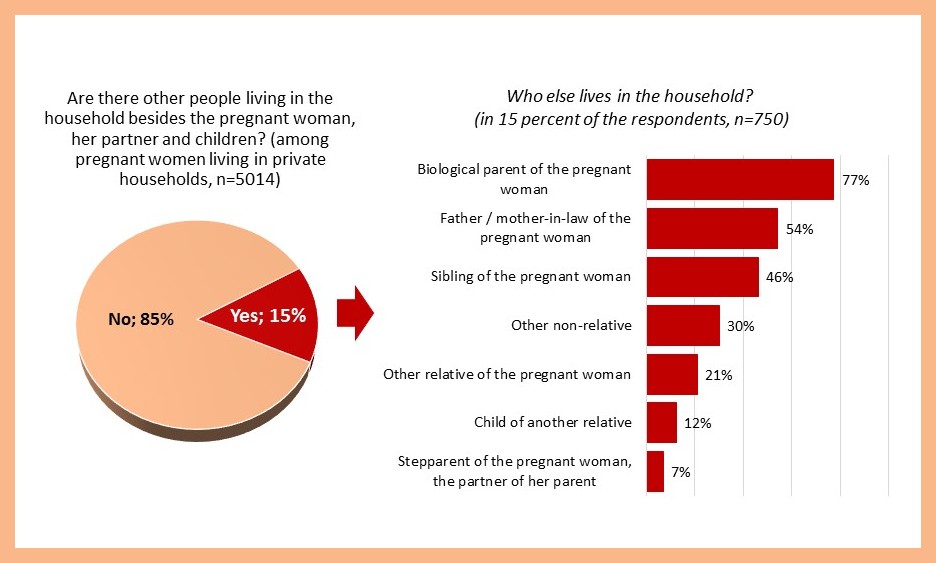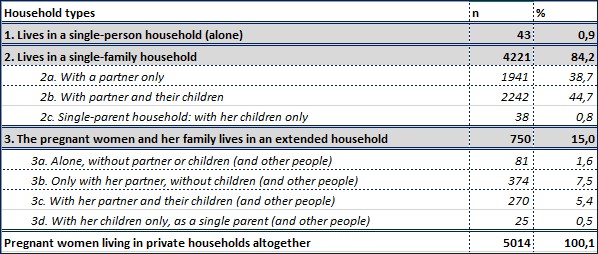During the prenatal data collection, we also wanted to find out about the size and structure of the household of the mothers of the cohort babies live in. We defined as people belonging to the same household those who pool their resources, and at least partially share the financial “burdens” of everyday life. However, several households managed independently can live in the same flat/house. In the first 5000 contacts, there were only 15 pregnant women indicating that they lived in an institution, most of them in a transition home for families, and we do not analyze their data here.
Most of the pregnant women (86%) live in a flat or house with only one household. Much fewer, 14% of the respondents said that they lived in a flat or house with several households. The average number of people living together in the same flat/house is five: three of them constitute the household of the pregnant woman, and another two are not part of this household on the average. The average number of people living in a household is three.
Below we will characterize the household the pregnant woman belongs to. However, the parents of the pregnant woman or the parents or her partner etc. may live in the same flat, but in another household separate from the pregnant woman – we do not yet have information about these additional individuals. In private households, the majority of the pregnant women, 85% live with their immediate families: their partners and their children if they have any. Academic literature calls these households one-family households . 15% of the pregnant women live in extended households, where other people also live with them in addition with their immediate family members (partner and children). Out of the 750 pregnant women living in extended households, 77% mentioned their own parents as people living with them, 54% the parents of their partners, and 46% their siblings.

Now we will take a quick look at the members of the pregnant women’s household. As we already mentioned, 85% of the pregnant women live in one-family households. Most typically, these households include the pregnant women and their partners and children (45%); but our sample contains a rather high proportion of pregnant women, who live with their partners only, without children for the time being (39%). There were only 38 pregnant women (0.8% of the respondents) indicating that they were raising their children alone, and thus live in a single-parent household with them.
15% of the pregnant women live in an extended household, which includes other people in addition to their partners and children. In these household types, the pregnant women and their partners most often await the birth of their first child together. Thus, it seems that the independence of a couple increases after the birth of children, and one-family households become more common among them. The proportion of pregnant women living in an extended household but without partners and children is rather negligible (1.6%), and the proportion of mothers living alone while expecting a child is even lower (0.9%).










